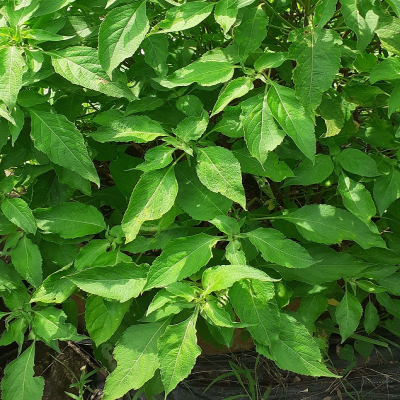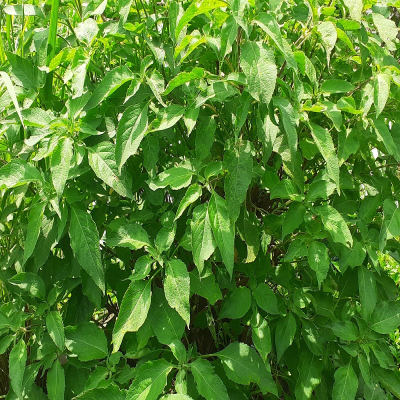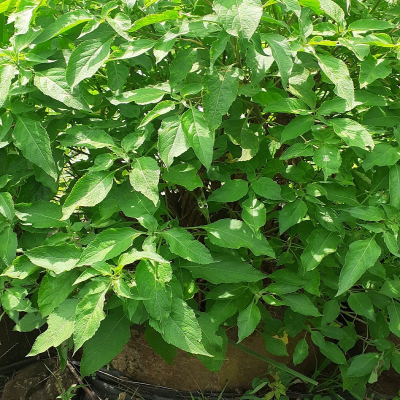Distribution and habitat: Found throughout India.
Botany: Shrubby, perennial, 1.2-1.8 m high, much branched, woody below. Stem and branches sub quadrangular, the young ones pubescent.
- Leaves : Elliptic-lanceolate, acute and pubescent on both sides, gland dotted.
- Flowers: Simple or branched rather short racemes; bracts sessile, longer than the calyx, pedicels shorter than the calyx, softly pubescent. Calyx 3 mm long in a flower, becoming twice as long in fruits, pubescent and glandular, upper lip rounded, veined, scarcely mucronate, curved upwards in fruits; longer than the lower; lower lip strongly nerved, the 2 central teeth short, lateral teeth shorter and broader, lanceolate. Corolla 4 mm long, pale greenish yellow, pubescent out side; upper lips 3 mm broad with 4 rounded teeth; lower lip longer than the upper, 1.25 mm broad. Stamens excerted; upper filament with a bearded tooth at the base.
- Fruit: Nutlets 1.5 mm. diameter subglobose, rugose, brown.
Properties: Carminative, antidysenteric, stimulant, demulcent
Chemical constituents: 1, 8-cineole, eugenol
Uses: Whole plant used in skin disease, erysipelas, inflammations, strangury, diseases of brain, heart, liver and the spleen. Leaves are used in seminal weakness, gonorrhea. Inflorescence used in snake bite
Agro technology
Soil and climate: Wide variety of soil, though moderately fertile, well drained loamy or sandy loam soils are considered ideal for cultivation. The growth of the crop is much better in tropical areas than in subtropical or temperate areas, where its growth is slow due to low temperatures during winter. Long days and high temperatures have been found favourable for plant growth and higher oil production.
Propagation: Seeds
Nursery raising: The soil is brought to fine tilth and well-rotted FYM is applied @ 2 kg/sq m and mixed well. As the seeds are minute, they are mixed with sand in the ratio of 1:4 and 10 g seeds are used for a nursery bed of 3 m x 1m x 0.15 m size. Germination is noticed after a week and continues up to 10 days.
Transplanting: The seedlings are immediately transported and planted in the main field at a distance of 30 cm x 30cm. Spacing of 40 cm x 50 cm and 50 cm x 50 cm are also recommended for this crop.
Fertilizer application: A fertilizer dose of 150: 75: 75 kg/ha has been found suitable for maximum herb yield and essential oil. Of this, entire dose of P and K applied at the time of transplanting; whereas, N is applied in three split doses.
Irrigation: Irrigation is provided twice a week for a month. Afterwards weekly irrigation is needed depending upon the rainfall and soil moisture status.
Interculture: After first and second cuttings, the soil should be stirred and the fertilizer applied and incorporated in the soil. Generally for a three year crop during the first year one hand weeding and two hoeings; during the successive years, four hoeings one after each harvest are recommended.
Pests and diseases: Sometimes mealy bugs and termites are reported to cause damage to this crop. Mealy bugs can be controlled by spraying 0.2% quinalphos or methyl parathion and termites can be controlled by application of 25 kg/ha Aldrex to the soil, followed by irrigation.
Harvesting: The first harvesting takes about 90-100 days in the case of direct sown and 75-90 days for transplanted crop. Immediately after harvest, the field is to be irrigated. The second and third harvests are taken at 50-60 days interval.




